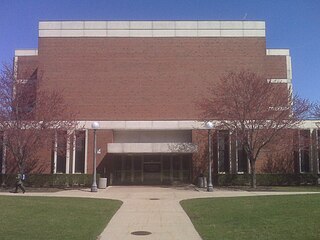Limit State Design (LSD), also known as Load And Resistance Factor Design (LRFD), refers to a design method used in structural engineering. A limit state is a condition of a structure beyond which it no longer fulfills the relevant design criteria. The condition may refer to a degree of loading or other actions on the structure, while the criteria refer to structural integrity, fitness for use, durability or other design requirements. A structure designed by LSD is proportioned to sustain all actions likely to occur during its design life, and to remain fit for use, with an appropriate level of reliability for each limit state. Building codes based on LSD implicitly define the appropriate levels of reliability by their prescriptions.

An I-beam is any of various structural members with an I or H-shaped cross-section. Technical terms for similar items include H-beam, w-beam, universal beam (UB), rolled steel joist (RSJ), or double-T. I-beams are typically made of structural steel and serve a wide variety of construction uses.
The International Building Code (IBC) is a model building code developed by the International Code Council (ICC). It has been adopted for use as a base code standard by most jurisdictions in the United States. The IBC addresses both health and safety concerns for buildings based upon prescriptive and performance related requirements. The IBC is fully compatible with all other published ICC codes. The code provisions are intended to protect public health and safety while avoiding both unnecessary costs and preferential treatment of specific materials or methods of construction. The code is updated every three years.
A steel detailer is a person who produces detailed drawings for steel fabricators and steel erectors. The detailer prepares detailed plans, drawings and other documents for the manufacture and erection of steel members used in the construction of buildings, bridges, industrial plans, and nonbuilding structures.
In structural engineering, a rigid frame is the load-resisting skeleton constructed with straight or curved members interconnected by mostly rigid connections, which resist movements induced at the joints of members. Its members can take bending moment, shear, and axial loads.

The American Welding Society (AWS) was founded in 1919 as a non-profit organization to advance the science, technology and application of welding and allied joining and cutting processes, including brazing, soldering and thermal spraying.
Steel Design, or more specifically, Structural Steel Design, is an area of structural engineering used to design steel structures. These structures include schools, houses, bridges, commercial centers, tall buildings, warehouses, aircraft, ships and stadiums. The design and use of steel frames are commonly employed in the design of steel structures. More advanced structures include steel plates and shells.
Nabih Youssef, S.E., F.A.S.C.E is an American structural engineer, most recognized for his work in earthquake engineering.
The American Concrete Institute is a non-profit technical society and standards developing organization. ACI was founded in January 1905 during a convention in Indianapolis. The Institute's headquarters are currently located in Farmington Hills, Michigan, USA. ACI's mission is "ACI develops and disseminates consensus-based knowledge on concrete and its uses."
The American Institute of Steel Construction Student Steel Bridge Competition is a student contest that tests the knowledge and practicality of teams of university students in the field of structural engineering. Ideally, the design and fabrication of the bridge is conceived and completed entirely by the students and the participation of the students in the process is highly encouraged. Some schools may not have the proper facilities and guidance necessary to erect the model bridge and may work with a commercial fabricator. However, the students must be fully responsible for the design and instructions, they must coordinate with the fabricator, and they must monitor the construction process.

Cold-formed steel (CFS) is the common term for steel products shaped by cold-working processes carried out near room temperature, such as rolling, pressing, stamping, bending, etc. Stock bars and sheets of cold-rolled steel (CRS) are commonly used in all areas of manufacturing. The terms are opposed to hot-formed steel and hot-rolled steel.

William Frazier Baker is an American structural engineer known for engineering the Burj Khalifa, the world's tallest building/man-made structure and a number of other well known buildings. He is currently a structural engineering partner in the Chicago office of Skidmore, Owings & Merrill, LLP (SOM).
The Metal Building Manufacturers Association (MBMA) was founded in 1956 and promotes the design and construction of metal building systems in the low-rise, nonresidential building marketplace. A nonprofit trade organization, MBMA's headquarters is in Cleveland, Ohio. The organization consists of Building Systems members that are certified according to standards that have been set by the International Accreditation Service, and Associate members that work in the metal building industry. MBMA has a general manager, and it has a chairman and Board of Directors who are elected by members on an annual basis.

The Nathan M. Newmark Civil Engineering Laboratory, or Newmark Lab, located at 205 N. Mathews Avenue in Urbana, Illinois on the campus of the University of Illinois at Urbana–Champaign, houses the university's Department of Civil and Environmental Engineering. The Lab was built in 1967, and has been modified and updated a number of times since then. The facility was named after professor and department head Nathan M. Newmark after his death.

A structural drawing, a type of engineering drawing, is a plan or set of plans and details for how a building or other structure will be built. Structural drawings are generally prepared by registered professional engineers, and based on information provided by architectural drawings. The structural drawings are primarily concerned with the load-carrying members of a structure. They outline the size and types of materials to be used, as well as the general demands for connections. They do not address architectural details like surface finishes, partition walls, or mechanical systems. The structural drawings communicate the design of the building's structure to the building authority for review. Structural drawings are also included with a proposed building's contract documents, which guide contractors in detailing, fabricating, and installing parts of the structure.
The Aluminum Association is a trade association for the aluminum production, fabrication and recycling industries, and their suppliers. The Association is a 501(c)(6) non-profit organization based in Arlington, Virginia, United States.
The Southern African Institute of Steel Construction (SAISC) is an organization which helps building and construction in South Africa by serving to promote and develop companies providing steel-related products and services to the industry.
The Research Council on Structural Connections (RCSC) is a research organization focused on bolted structural connections. Their technical standard on this subject is cited in the US steel design code.
A patented track crane is a crane with a bottom flange of hardened steel and a raised tread to improve rolling.
Omer Blodgett was a structural welder, educator, and the author of Design of Welded Structures and Design of Weldments. He was seen as an expert in his field, known for making complex issues simple and easy to understand and coining many phrases in use by structural welders. His two books are still considered foundational in structural welding.






